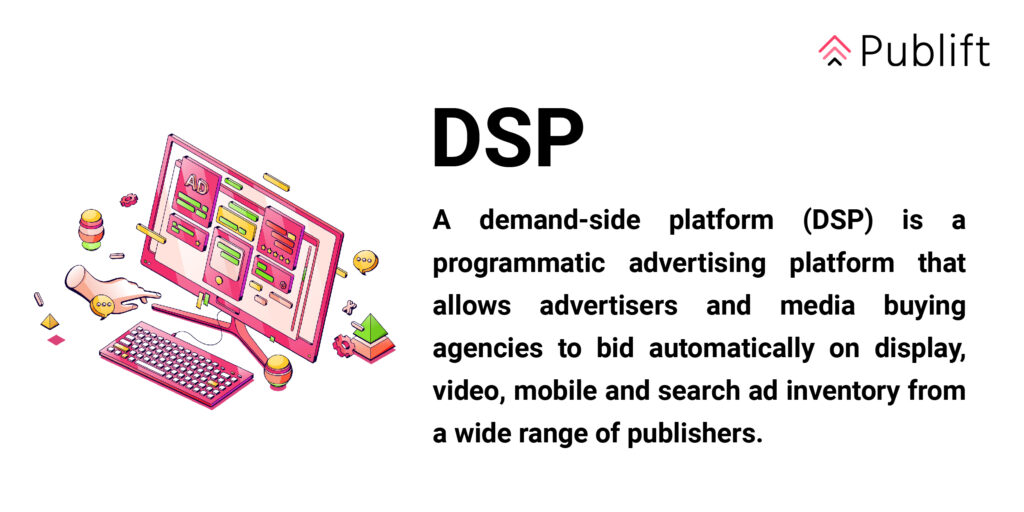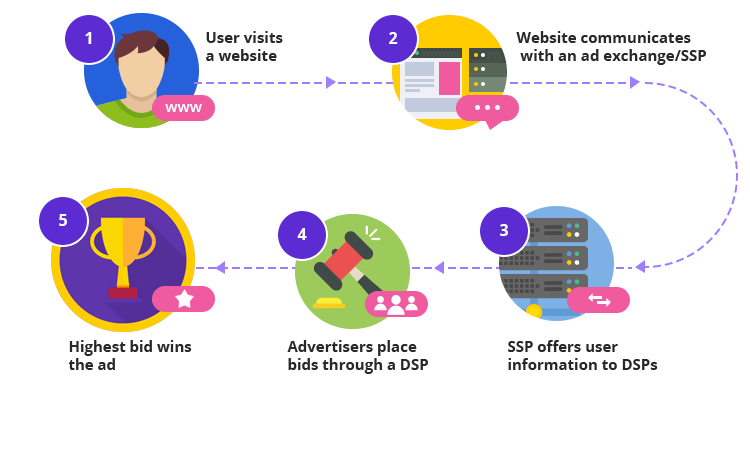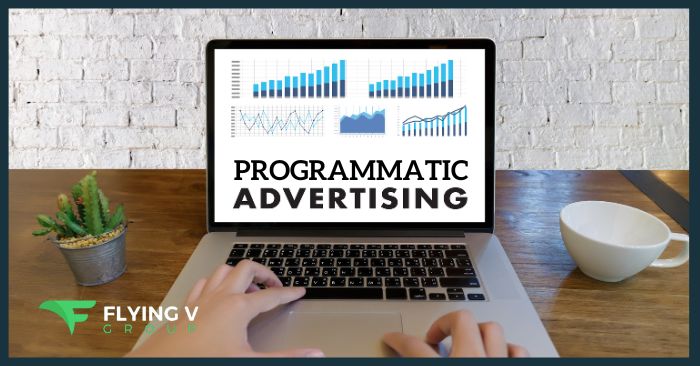The world of digital advertising is constantly evolving, and a new tool, programmatic DSPs (demand-side platforms), is making a big difference in how advertisers buy and manage their ad campaigns.
Ad buying was a time-consuming and manual process in the past, but programmatic DSPs have made it much easier and more efficient. These platforms use data to help advertisers precisely target the right audience, making you more likely to see relevant ads.
If you’re a marketer or advertiser who wants to create effective campaigns, this guide will help you understand how programmatic DSPs work and how they can help you achieve your goals.
- Understanding Programmatic DSPs
- How Programmatic DSPs Work
- Benefits of Using Programmatic DSPs
- Critical Strategies for Effective Ad Campaigns:
- Challenges and Solutions
- Harness the power of Programmatic DSPs
- FAQs
- 1. What are Programmatic DSPs, and how do they work?
- 2. What challenges do advertisers face when using Programmatic DSPs, and how are these challenges addressed?
- 3. How can advertisers ensure their ads reach the right audience with Programmatic DSPs?
- 4. How do Programmatic DSPs address the issue of ad viewability?
Understanding Programmatic DSPs

Image from Publift
Programmatic DSP is a tool that helps advertisers buy and optimize digital ads automatically. It uses innovative technology to analyze a lot of information in real-time, so advertisers can make informed decisions about how and when to show ads.
This way, they can make sure their ads are shown to the right people at the right time, making their campaigns more effective.
How Programmatic DSPs Work
Online advertising is a complex world involving different companies working together. These companies include ad exchanges, supply-side platforms (SSPs), and demand-side platforms (DSPs).
When a user visits a website or app, the publisher’s SSP sends the user’s data, such as demographics, browsing behavior, and interests, to the ad exchange. The ad exchange then broadcasts this data to connected DSPs, allowing advertisers to evaluate the user’s profile and determine if it aligns with their target audience.
DSPs then participate in a real-time auction, placing bids on the ad impression based on the user’s profile and campaign objectives. The highest bidder secures the ad space, and the ad is displayed to the user. This process happens within milliseconds, ensuring that ads are delivered seamlessly to users.

Image from Epom Market
Benefits of Using Programmatic DSPs
Programmatic DSPs offer numerous advantages over traditional ad-buying methods, making them an attractive option for advertisers seeking to optimize their ad campaigns:
Efficient Ad Buying
Programmatic DSPs automate the ad-buying process, eliminating the need for manual negotiations and saving advertisers time and resources.
Data-Driven Targeting
DSPs allow advertisers to precisely target their ads using various data points, including demographics, interests, behaviors, and contextual cues.
Real-Time Optimization
Programmatic DSPs enable real-time campaign optimization, allowing advertisers to adjust bids, targeting parameters, and creative content based on performance data.
Increased Transparency
DSPs provide detailed reporting and analytics, giving advertisers excellent campaign performance and ad spending visibility.
Critical Strategies for Effective Ad Campaigns:
Advertisers must adopt strategic approaches that align with their objectives to harness the full power of Programmatic DSPs. Here are some key strategies to consider:
Define Clear Objectives
Before diving into the programmatic landscape, defining clear campaign objectives is crucial. Whether the goal is to increase brand awareness, drive website traffic, or boost conversions, having a well-defined objective will guide the entire campaign strategy.
Audience Segmentation
One of the primary advantages of Programmatic DSPs is the ability to target specific audience segments precisely. Use data to create detailed audience profiles, ensuring your ads reach the right people at the right time. This targeted approach enhances the relevance of your message, increasing the likelihood of engagement.
Dynamic Creatives
Static ads may capture attention, but dynamic creatives take it a step further. Leverage the capabilities of Programmatic DSPs to deliver personalized and dynamic ad content based on user behavior and preferences. This not only enhances user experience but also increases the chances of conversion.
Real-time Optimization
Programmatic DSPs operate in real-time, allowing advertisers to monitor and optimize their campaigns on the fly. Use real-time data insights to adjust bidding strategies, refine audience targeting, and allocate budget effectively. This approach ensures that your campaign stays aligned with your goals.
Challenges and Solutions
Despite the many benefits of digital advertising through programmatic DSPs, marketers face several challenges. These include ad fraud, viewability issues, and the risk of their ads appearing in inappropriate or unsafe contexts.
However, the industry has responded with innovative solutions to counter these challenges and ensure a secure advertising environment.
Ad Fraud:
Ad fraud is a big problem in digital advertising. Dishonest individuals use various tactics to generate false impressions or clicks, stealing budgets without providing real value.
However, programmatic DSPs have tools to detect and prevent this fraud. These tools use advanced algorithms that quickly analyze real-time patterns to identify fraudulent activity.
Using machine learning and artificial intelligence, DSPs can continually develop detection methods to avoid fraudsters. This proactive approach significantly reduces the impact of ad fraud, ensuring that advertisers’ budgets are spent on genuine, high-quality interactions.
Viewability Concerns:
When it comes to digital advertising, ads must be served to the right audience and seen by them. Programmatic DSPs recognize the importance of addressing viewability concerns to enhance campaign performance.
They use tools that measure the visibility of ads on websites and applications, providing detailed metrics on how much of an ad is visible and for how long. With this information, marketers can optimize their campaigns for maximum visibility, ensuring their messages are delivered to the intended audience.
Brand Safety Issues:
Brand safety is a top priority for advertisers. Placing ads in the wrong context can harm a brand’s reputation. Programmatic DSPs have introduced tools to mitigate this risk. These tools use keyword filtering, content categorization, and contextual analysis to evaluate the environments in which ads are placed.
Advertisers can set predefined parameters to ensure their ads don’t appear in inappropriate or harmful content. This proactive approach safeguards brand reputation and fosters trust between advertisers and consumers.
Harness the power of Programmatic DSPs
Staying competitive using the right tools and strategies is essential in digital advertising. One tool that has become essential is Programmatic DSP.
It helps advertisers make the most of digital advertising by reaching the right people at the right time and ensuring their ads work well.
Using Programmatic DSP, advertisers can optimize their campaigns in real-time, which means they can adjust things on the fly to get the best results. As technology evolves, Programmatic DSP will remain essential to digital advertising.
FAQs
1. What are Programmatic DSPs, and how do they work?
Programmatic DSPs (demand-side platforms) are software platforms that enable advertisers to automate buying and managing ad inventory across various digital channels. They connect advertisers to a vast network of publishers and ad exchanges, allowing them to purchase ad impressions based on predefined targeting criteria and campaign goals in real-time.
2. What challenges do advertisers face when using Programmatic DSPs, and how are these challenges addressed?
Ad fraud, viewability concerns, and the risk of brand safety issues are challenges advertisers may encounter when using Programmatic DSPs. However, the industry has responded proactively by implementing advanced technologies, such as fraud detection algorithms and brand safety tools, to counter these challenges and provide a secure advertising environment.
3. How can advertisers ensure their ads reach the right audience with Programmatic DSPs?
The key to reaching the right audience lies in effective audience segmentation. Programmatic DSPs allow advertisers to create detailed audience profiles based on data, ensuring their ads are delivered to the most relevant demographics. This targeted approach enhances the campaign’s overall effectiveness, increasing the likelihood of engagement and conversions.
4. How do Programmatic DSPs address the issue of ad viewability?
Programmatic DSPs recognize the importance of ad viewability and have incorporated measurement tools to track the visibility of ads on websites and applications. These tools provide advertisers with detailed metrics, including the percentage of an ad in view and the duration of visibility. This information allows marketers to optimize their campaigns to ensure maximum visibility and impact.
5. Can Programmatic DSPs adapt to changes in real time?
Absolutely. One of the standout features of Programmatic DSPs is their ability to operate in real-time. Advertisers can monitor and optimize their campaigns on the fly, making adjustments based on real-time data insights. This approach ensures that campaigns stay aligned with goals, effectively allowing advertisers to adapt to changing market conditions and consumer behavior.






0 Comments